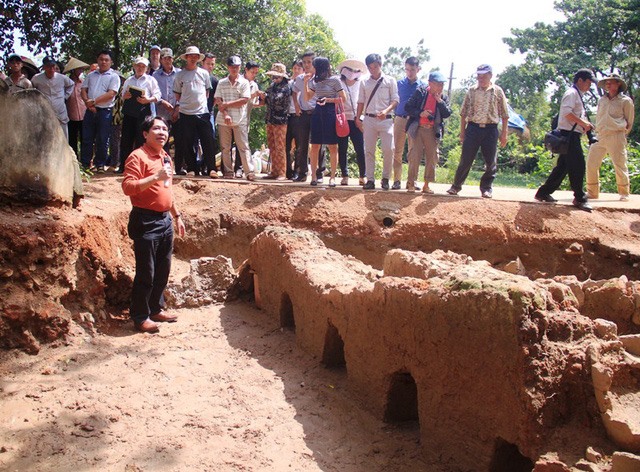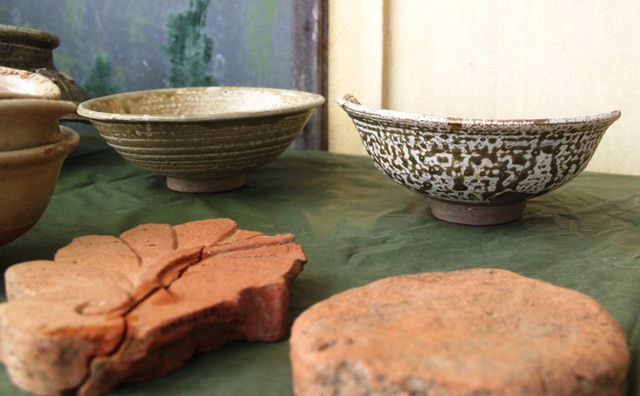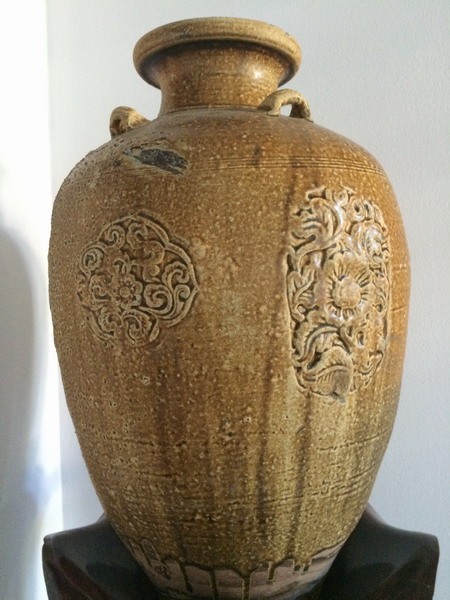 Life & Style
Life & Style

Ancient Bình Định ceramics were found to be influenced by both Vietnamese and Chăm artisans.
 |
| Old ovens: Bình Định, the former state city, Vijaya, was known as the centre of ceramics with six concentrated ceramic production kilns. — Photo dantri.com.vn |
BÌNH ĐỊNH — Ancient Bình Định ceramics were found to be influenced by both Vietnamese and Chăm artisans.
This statement was made at an international seminar themed “Bình Định ancient ceramics – Vijaya kingdom and its relationship with Thăng Long Citadel of Đại Việt (the 11th-15th century)”.
The seminar, held last Saturday by the Việt Nam Academy of Social Sciences in the southern city of Quy Nhơn, was attended by 80 local and international scholars and researchers from 10 countries, including America, France, Japan, Thailand and Australia.
Among the topics discussed at the seminar were Chăm ceramics in relation to Việt Nam ceramics and the ownership of ancient Bình Định ceramics, both of which drew attention from researchers.
Vice Chairman of Việt Nam Academy of Social Sciences, Bùi Nhật Quang, said the ownership of ancient Bình Định ceramics is worth discussing because the ceramic producing techniques of Bình Định kilns was quite different from the traditional techniques of the Chăm people.
“We deemed that in the history of establishment and development of Trường Cửu ceramics (in An Nhơn, Bình Định), there might have been the presence of Vietnamese ceramic artisans,” director of Research Centre for Imperial Citadel, Bùi Minh Trí, said.
 |
| Beautiful bowls: The decorative patterns and glazes on the ceramic items reflected the fine skill of ancient artisans in firing and glaze-coating techniques. — Photo dantri.com.vn |
Besides its rich Chăm cultural heritage, which is reflected in the impressive temples and towers, Bình Định has also been well known as a centre of ceramics for centuries.
“That the ancient Bình Định ceramics were found in the Thăng Long Imperial Citadel is an interesting discovery,” said Trí.
The artifacts found, which are diverse in shape, color of glaze and decorative patterns, are all of fine quality. They include vases, jars, bowls and plates dating back to the 15th century, according to Trí. “The Vijaya kingdom might have given these items to the Thăng Long royal court as a tribute,” said Trí.
Chairman of Việt Nam Association of Archaeology, Tống Trung Tín, has studied the ceramics of Thăng Long in the Lý-Trần dynasty and ceramics in Gò Sành, Bình Định. He found that there is a similarity in shapes and the single-color glaze between the ceramics items produced in these two kilns.
Tín said the technique of making glaze ceramics in Gò Sành was brought about by the Vietnamese people. Vietnamese ceramics artisans also got together with the Chăm people to make Việt-Chăm ceramics, which symbolised the Đại Việt-Champa relation in the late 14th-15th century.
 |
| Piece of art: Chăm’s ceramics have a close relationship with that of Việt Nam. — Photo baobinhdinh.com.vn |
“The Vietnamese ceramics artisans, with their techniques in glaze ceramics, found a way to appear in Bình Định ceramic kilns and played the role of chief ceramic maker who worked with local ceramic artisans to create the unique and fine Gò Sành ceramics,” said Tín.
"Chăm’s ceramics have a close relationship with that of Việt Nam,” said Dr Đặng Văn Thắng from HCM City’s University of Social Sciences and Humanities.
The presence of Chăm ceramics in Thăng Long Imperial Citadel reflected the close relationship between Champa’s Vijaya state city (Bình Định now) and Việt Nam’s former capital of Thăng Long in history, said Lê Đình Phụng from the Institute of Archaeology.
Besides, the seminar also discussed the characteristics, roles and values of Bình Định ancient ceramics in Asia marine trade networks, as well as the economic and cultural exchange between Champa and Việt Nam.
The term Champa refers to a collection of independent Chăm polities that extended across the coast of what is today’s central and southern Việt Nam from approximately the 2nd century (192) through the 19th century (1832).
Bình Định was the former state city, Vijaya, the political and economic centre of the ancient Champa kingdom in the 15th century.
From the 11th to 15th century, Bình Định was known as the centre of ceramics with six concentrated ceramic production kilns. — VNS




